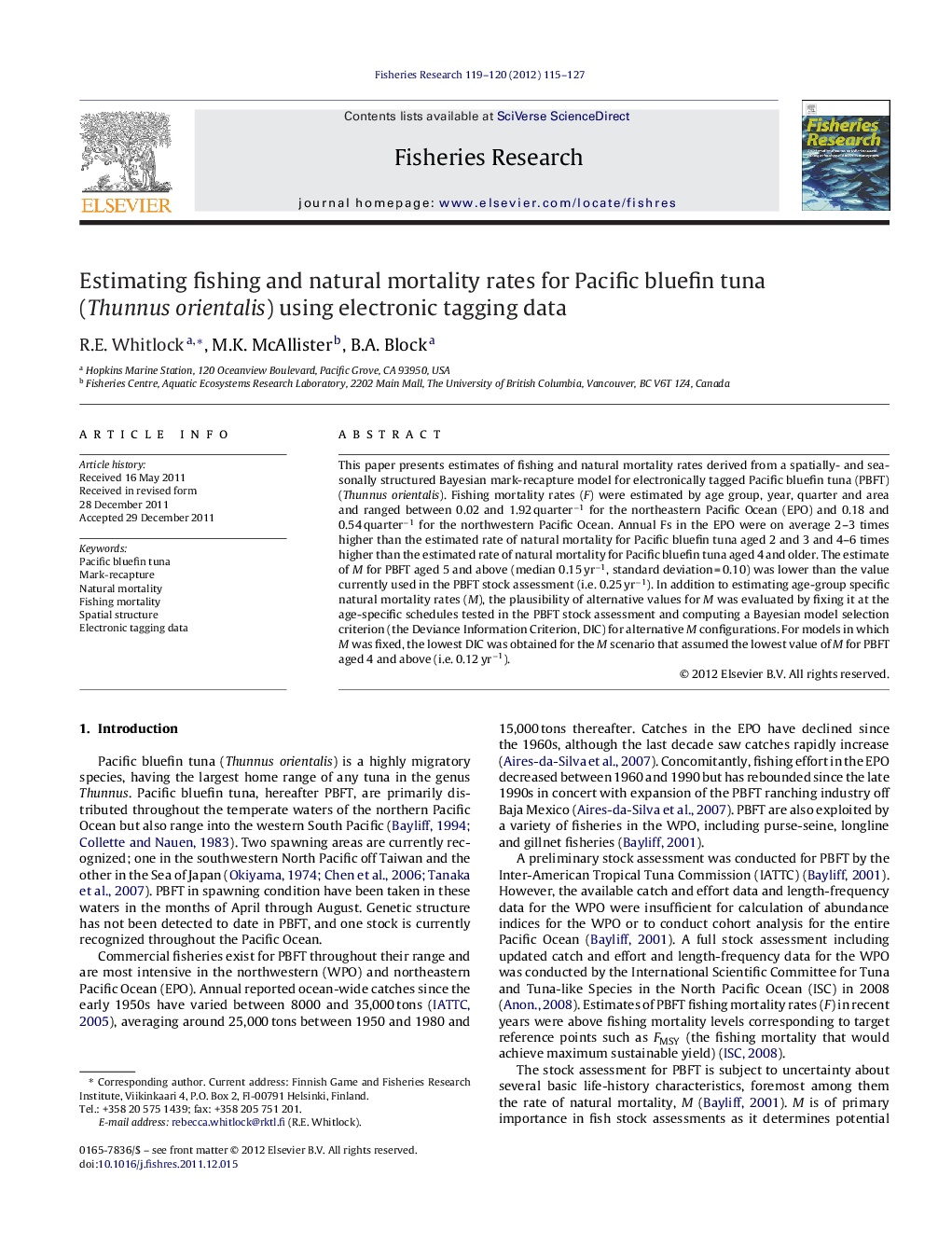| Article ID | Journal | Published Year | Pages | File Type |
|---|---|---|---|---|
| 4543396 | Fisheries Research | 2012 | 13 Pages |
This paper presents estimates of fishing and natural mortality rates derived from a spatially- and seasonally structured Bayesian mark-recapture model for electronically tagged Pacific bluefin tuna (PBFT) (Thunnus orientalis). Fishing mortality rates (F) were estimated by age group, year, quarter and area and ranged between 0.02 and 1.92 quarter−1 for the northeastern Pacific Ocean (EPO) and 0.18 and 0.54 quarter−1 for the northwestern Pacific Ocean. Annual Fs in the EPO were on average 2–3 times higher than the estimated rate of natural mortality for Pacific bluefin tuna aged 2 and 3 and 4–6 times higher than the estimated rate of natural mortality for Pacific bluefin tuna aged 4 and older. The estimate of M for PBFT aged 5 and above (median 0.15 yr−1, standard deviation = 0.10) was lower than the value currently used in the PBFT stock assessment (i.e. 0.25 yr−1). In addition to estimating age-group specific natural mortality rates (M), the plausibility of alternative values for M was evaluated by fixing it at the age-specific schedules tested in the PBFT stock assessment and computing a Bayesian model selection criterion (the Deviance Information Criterion, DIC) for alternative M configurations. For models in which M was fixed, the lowest DIC was obtained for the M scenario that assumed the lowest value of M for PBFT aged 4 and above (i.e. 0.12 yr−1).
► We analyze electronic tagging data for Pacific bluefin tuna (PBFT). ► We use mark-recapture models to estimate fishing and natural mortality rates. ► Quarterly track positions from archival tag data were used to estimate movement rates. ► We obtained an estimate of natural mortality for adult PBFT of 0.15 yr−1. ► Estimated rates of fishing mortality may exceed sustainable levels.
